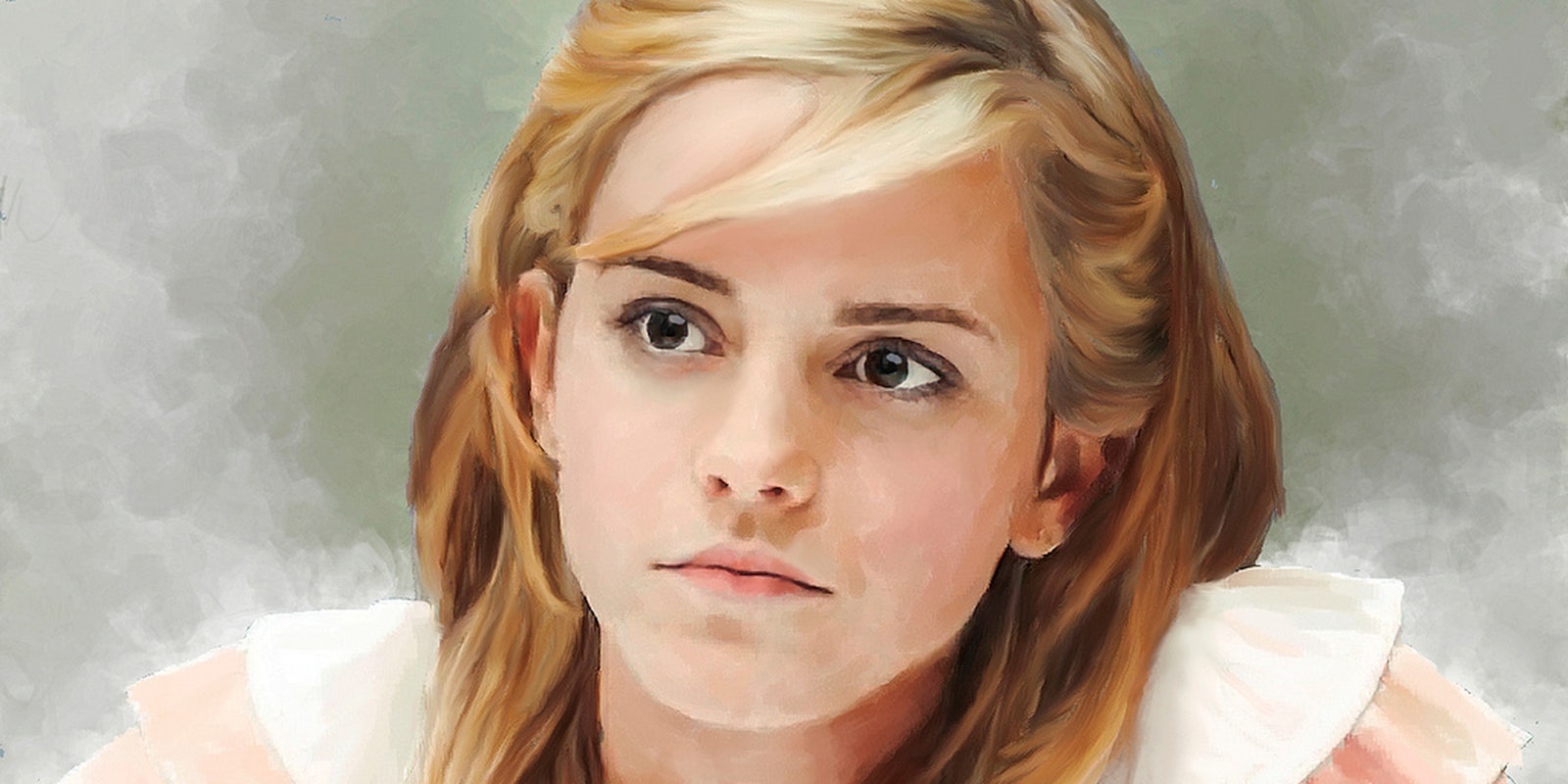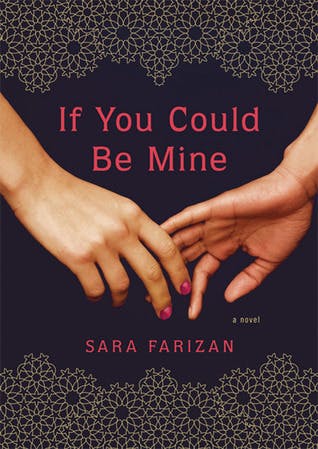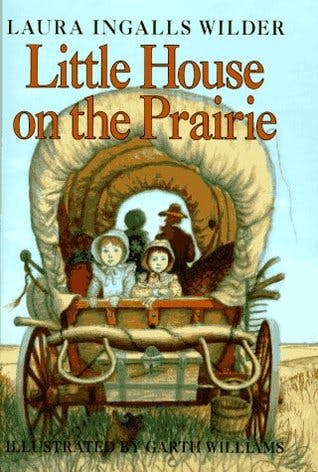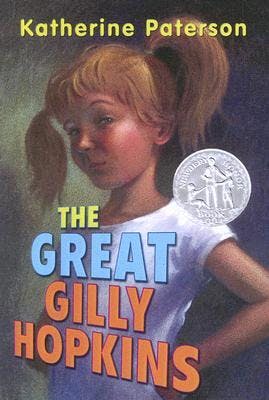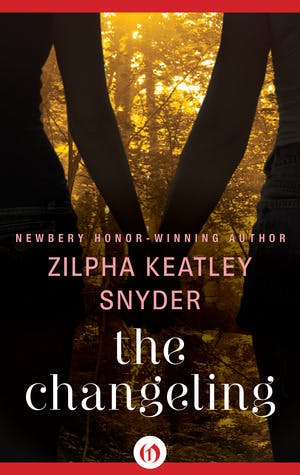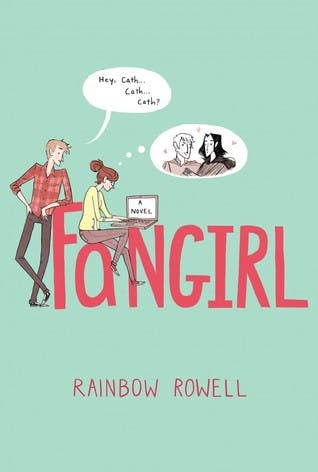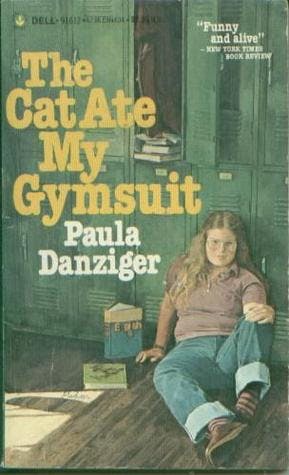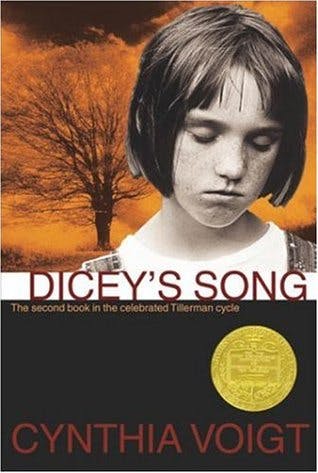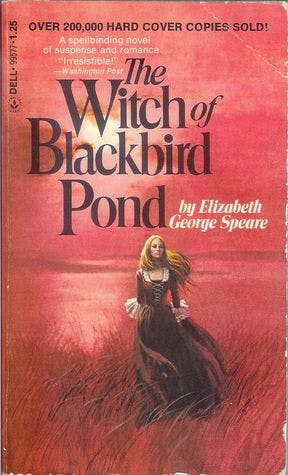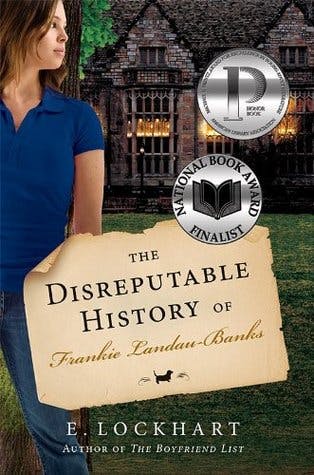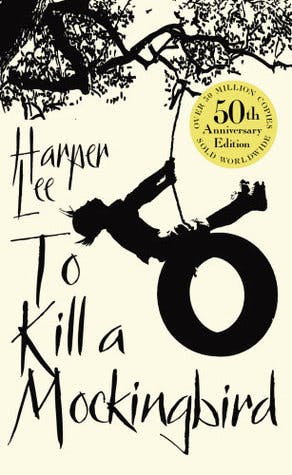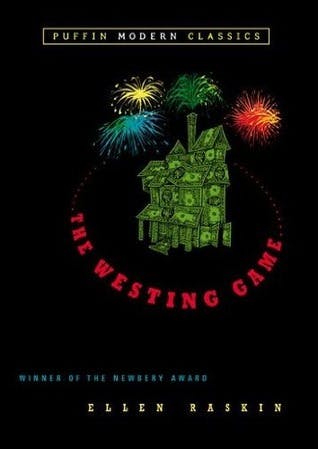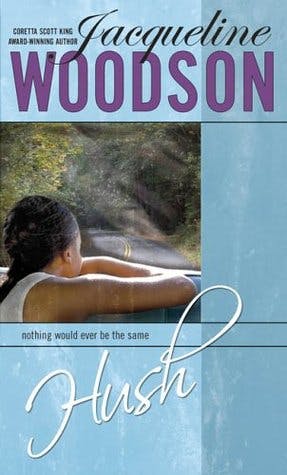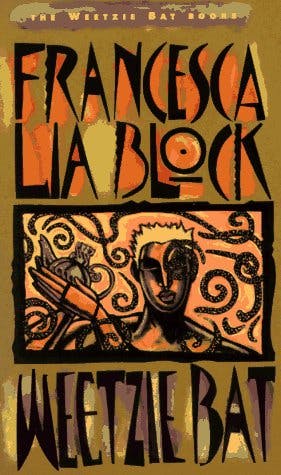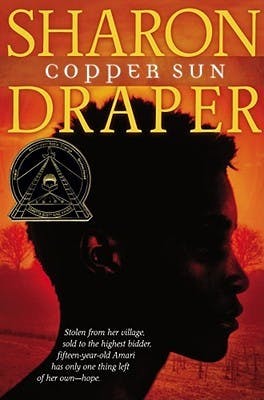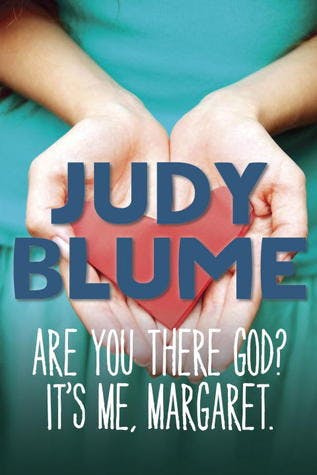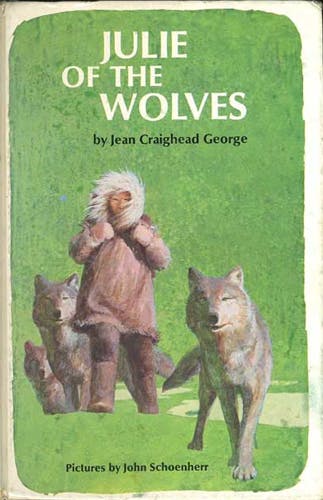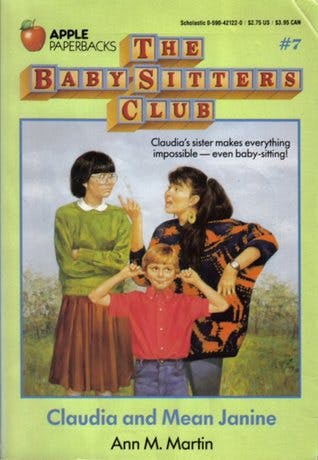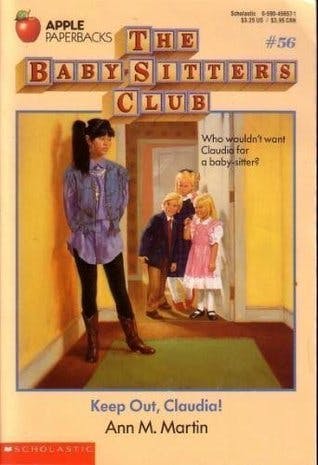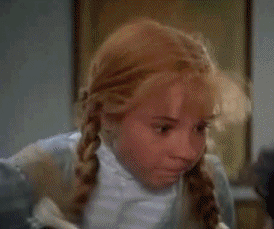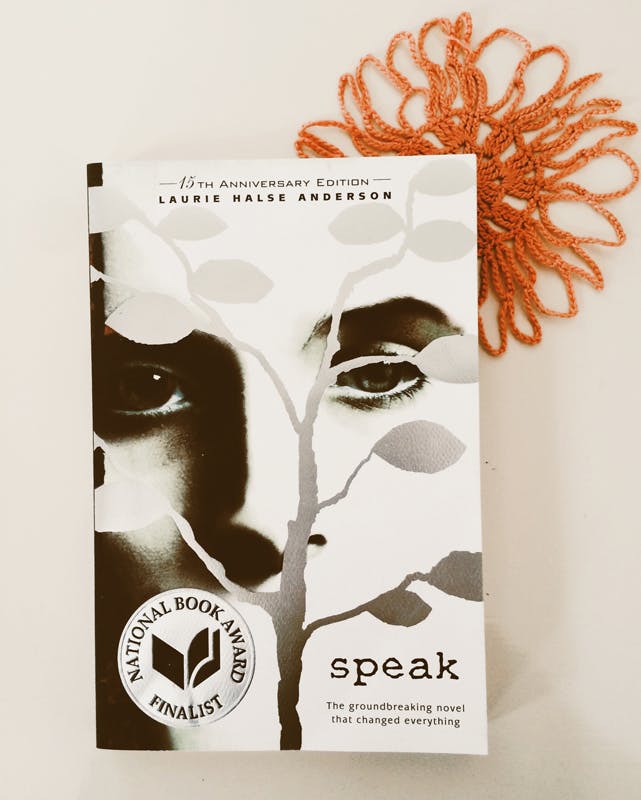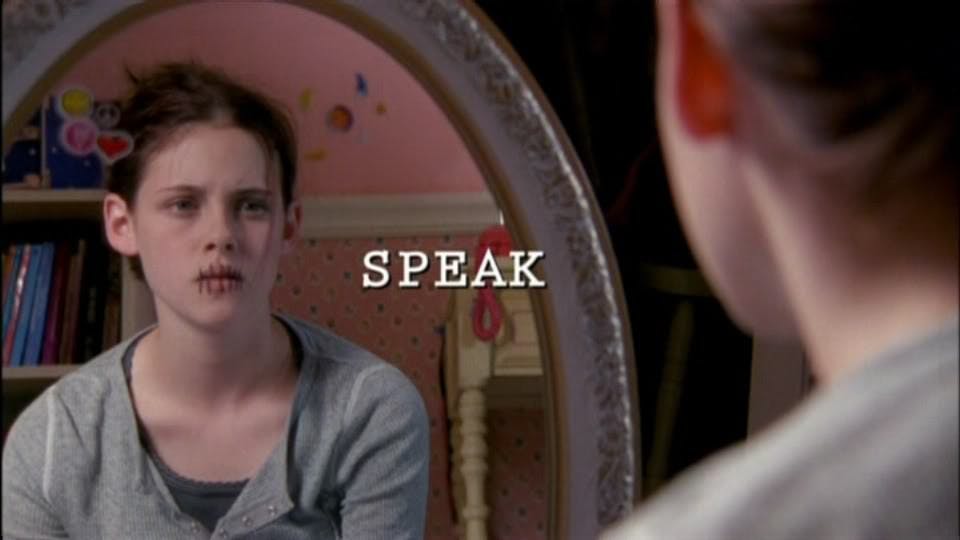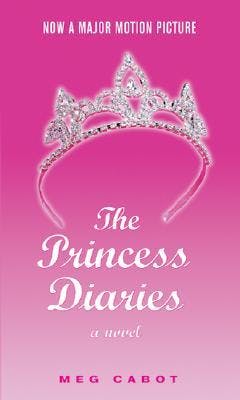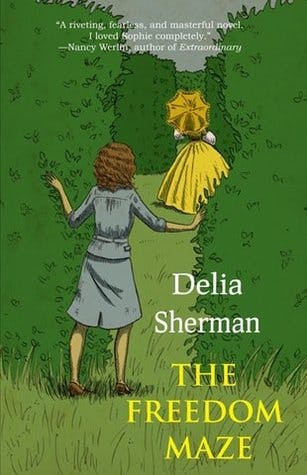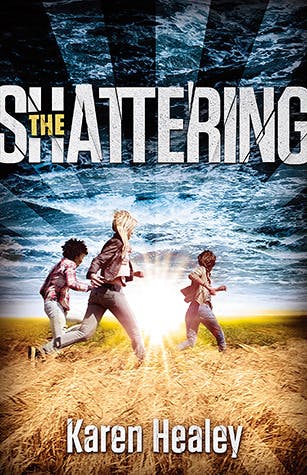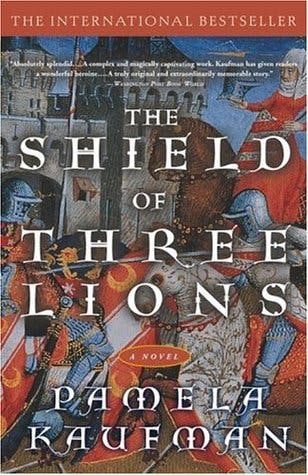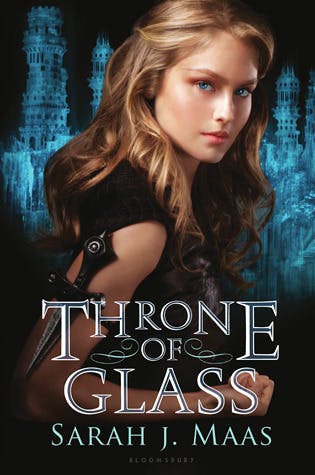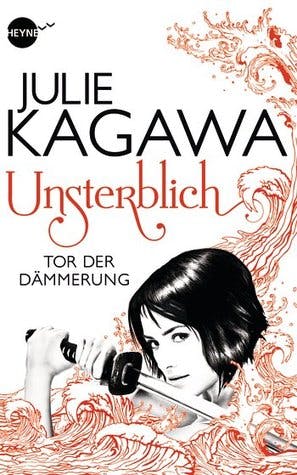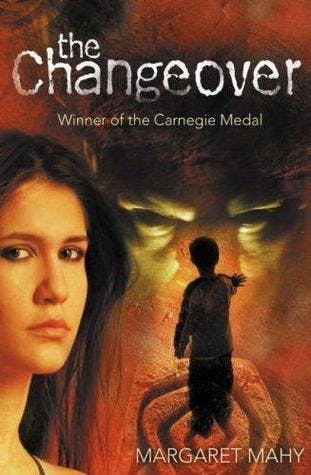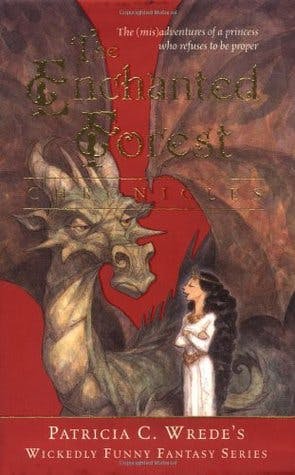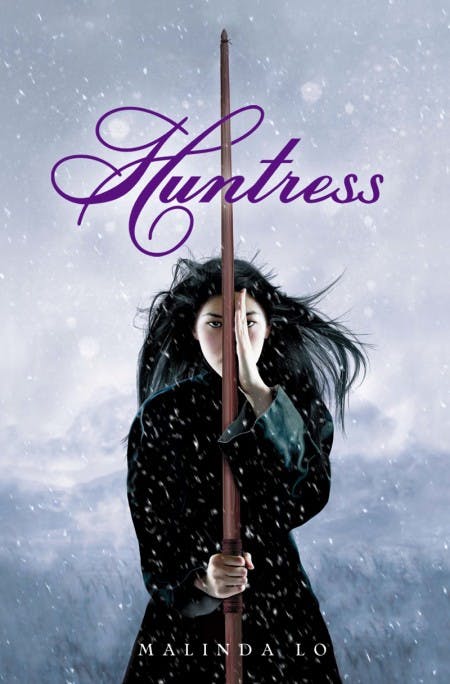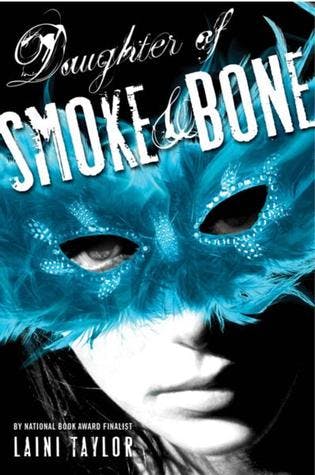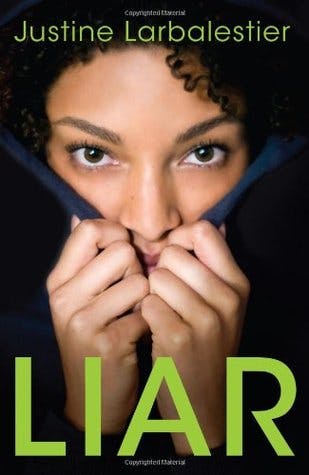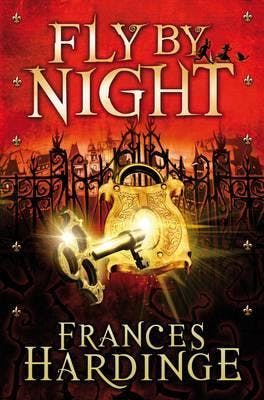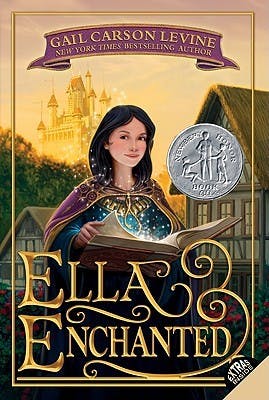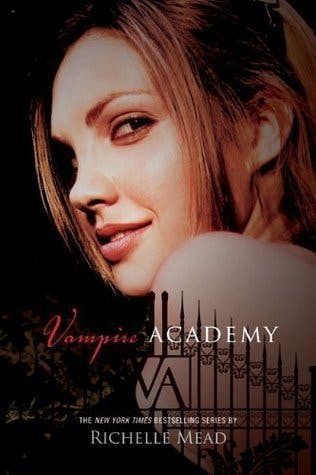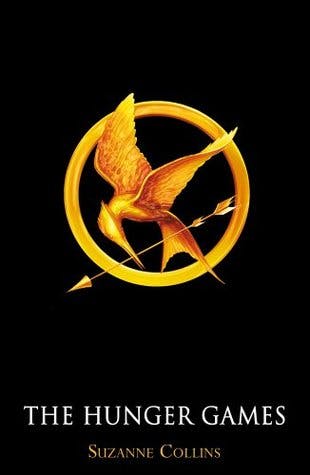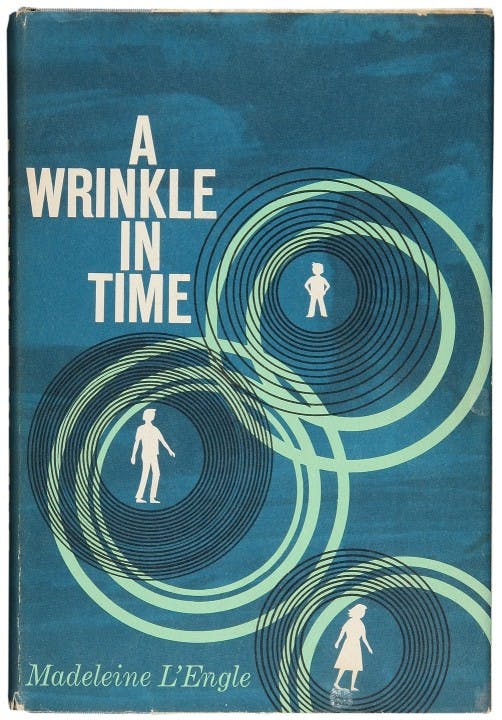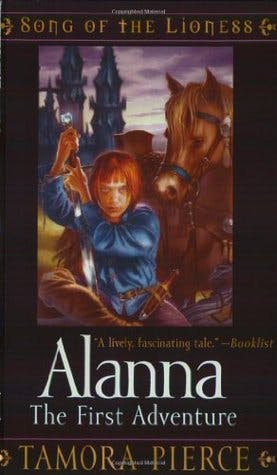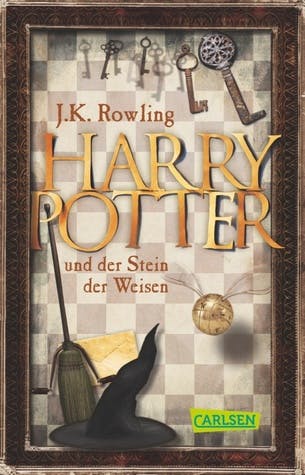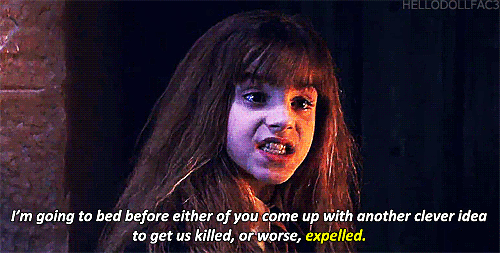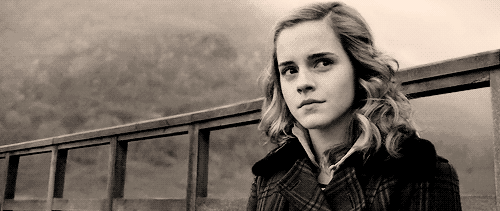Do YA heroines matter? We all know what kind of impact characters like Katniss and Hermione had on their worlds. But what about the impact they have on ours?
As we adjust to the new year, we welcome what will hopefully be a fresh start for that perennially beleaguered genre known as young adult fiction. Last year was especially pernicious to YA; when women writers weren’t getting shafted by the John Green Effect, the genre as a whole was getting hammered in the media.
First Slate declared that the idea of adults reading books for teens was “embarrassing;” then Vanity Fair, writing about the adult novel The Goldfinch, described it as a young adult novel and declared that it represented “proof of the infantilization of our literary culture.” In September, New York Times critic A.O. Scott referenced the Slate piece in an article decrying the demise of “adulthood” in popular culture. Scott’s piece opened the floodgates on handwringing “(wh)YA?” pieces. The Daily Review ordered YA fans to “grow up.” The New Yorker opined that Rick Riordan’s hit Percy Jackson series might offer too “easy gratification” to young readers. Writing about the culture war over YA, the New York Review of Books intoned that “one does not pass from lower to higher.”
The implication is that genre fiction, like young adult necessarily equates to “lower” while “higher” forms of literature are those to be found on the regular fiction shelves of a given bookstore. But where does that leave those readers who believe that the “lower” in this case is the higher? Critics are generally eager to lambaste young adult fiction as less lofty, less noble, less moral and ultimately less soul-sustaining than most “serious” literature. On the other hand, research has shown that readers of Harry Potter actually grow less prejudiced and more tolerant over time. If that’s the case, what exactly is “low” about YA, again?
Last month we wrote about a little girl named Mia who turned to the heroines of young adult fiction for inspiration. “Katniss taught me to survive,” she wrote. “Hermione taught me to reason.” In honor of Mia, we’re taking a look at our favorite heroines of young adult literature. We’re borrowing our take on the concept of a heroine from the blog YA Sisterhood:
A heroine is a female character who is admired for her noble qualities. We think it’s someone who meets the world head on. This doesn’t mean she has to be a hardcore girl who can beat up anyone who crosses her path (though those girls certainly qualify). Your favorite can be anyone you admire, for any reason. The important thing is that she is extraordinary in some way or another– be that the way she handles other people, her inexhaustible humor, or her skill with a crossbow.
You won’t find these kinds of heroines on the adult shelves. We’ve divided our list into YA Fantasy Heroines and Realist YA Heroines. It’s our hope that in talking about our favorite heroines of the past, we’ll see the list grow more empowered, more diverse, and more respected in the future.
The top 20 heroines of realistic young adult fiction
20) Georgia Nicholson, Angus, Thongs, and Full-frontal Snogging (Confessions of Georgia Nicholson), by Louise Rennison (1999)
Georgia is the teenage Bridget Jones, a model for the harried would-be British New Adult of the millennium—wryly self-aware, a little hopeless, and always fab no matter the circumstances.
Sahar, If You Could Be Mine, Sara Farizan (2013)
Seventeen-year-old Sahar is an Iranian teen with a huge secret: She’s a lesbian in love with her best friend. Her choices in a society that condemns homosexuality, but embraces gender transition as a “cure” make her story unique and memorable. But even more remarkable than her decision to try to become a man so she can love the woman of her dreams is the determination and passion with which she throws herself into her own love story.
19) Laura, the Little House series, by Laura Ingalls Wilder (1932)
This autobiographical look at life surviving the great outdoors not only bridged the 19th and 20th centuries, it made Laura into the original American Girl: A relatable, naive girl who grew into a wise young adult before our eyes.
18) The Great Gilly Hopkins by Katherine Paterson (1979)
We could have lined this list with Katherine Paterson’s tough, resilient heroines, all of whom manage to forge their own identities in the bleakest and most cynical worlds. But among them all, Gilly is both classic, undated, and quintessential—a survivor at all costs. Most important, she’s a girl opening her eyes to a fraught culture, willing to accept hard truths about reality, and willing to learn and grow from her mistakes.
17) Ivy, The Changeling, by Zilpha Keatley Snyder (1970)
Before Girl, Interrupted, before Paper Towns, Keatley Snyder’s beautiful and broken heroines loomed over the shadows of the children’s literature landscape. Defiant, angry, and hopeful at all costs, Ivy was the quintessential lost changeling of a post-war era, rejecting the ‘manic pixie dreamgirl’ label long before your faves.
16) Cathy, Fangirl, Rainbow Rowell (2013)
The best thing about Rowell’s already-iconic Cathy is that she represents a class of die-hard teens who were previously all but invisible in geek culture: The fic-writing, book-loving, shameless slash shipper who isn’t the punch line of a joke. Rather, she’s the sensitive and talented heroine of her own life, using fandom as a route to coming into her own.
15) Marcy, The Cat Ate My Gymsuit by Paula Danziger (1974)
Before Robin Williams stood on a chair and the Green brothers urged their fans to decrease worldsuck, this book was showing teens the possibilities of changing a rigid and sometimes authoritarian school system—and the inevitable risks of thinking for themselves. It’s no coincidence this book was released the same year as Robert Cormier’s classic YA novel The Chocolate War. In her quest to support a teacher facing termination, Marcy faces off against the school, her own parents, and ultimately her own self-image.
14) Dicey Tillerman, Dicey’s Song (the Tillerman Cycle) by Cynthia Voigt (1983)
Dicey is the quintessential independent tomboy struggling to protect her family. In a book that deals with poverty, isolation, abandonment, and family dysfunction, what most people remember about Voigt’s classic Newbery winner is that Dicey was one of the greatest YA heroines of them all.
13) Kit Tyler, The Witch of Blackbird Pond, by Elizabeth George Spear (1958)
Kit’s independent spirit, frustration, and anger have been riveting readers of this bleak story about Puritan life in New England for nearly six decades. It’s not the historical accuracy we keep coming back to, but rather Kit and her courage, her determination to break free from a life that is strangling her, and a society where women who break the rules don’t often live to tell the tale.
12) Frankie Landau-Banks, The Disreputable History of Frankie Landau-Banks, by E. Lockhart (2008)
Gossip Girl may have codified the rules of a life spent caught up in the whirlwind game of teenage power struggles, but Frankie shows us what it’s like to slowly wake up to the system, then figure out how to manipulate it. And the best part is that the game Frankie really learns to play is bigger than high school. It’s the game of being a woman in a man’s world.
11) Scout Finch, To Kill a Mockingbird, by Harper Lee (1960)
Since To Kill a Mockingbird was promptly earmarked as Pulitzer-winning “real” literature, we don’t often get to talk about it as YA. But, as teens around the world have been learning ever since Scout’s brother Jem first got his arm badly broken at the elbow, it has all the hallmarks, including basic realizations about social and racial injustice in America that continue to serve as a wake-up call. Scout, as the book’s narrator, has to be wiser than her age because the events she’s living through are so much bigger than she is. It may be Tom Robinson’s story, Atticus’s everyman moment, and Jem’s coming-of-age, but it’s Scout’s goodness, naive honesty, and compassion that make her a true heroine.
10) Turtle Wexler, The Westing Game, by Ellen Raskin (1978)
Children’s literature is full of spunky mystery-solving kids, including the iconic Nancy Drew, but it’s Raskin’s clever and enduring Clue-like mystery which gave us our favorite of them all. Turtle plays the Westing Game by setting out, not to win the Westing Game, but to find out more about her favorite dotty old uncle. In the process, she learns who her family is, and we fall a little in love.
9) Toswiah / Evie, Hush by Jacqueline Woodson (2000)
Creating the ability to relate to extraordinary situations is one of Woodson’s strengths, and though she won the National Book Award for last year’s monumental autobiographical work Brown Girl Dreaming, it’s her heroine Toswiah we keep coming back to. Uprooted from their former lives, Toswiah and her family enter witness protection, change their names, and fight to hold themselves together. Hush deals with police brutality and the quest to change a broken power system, but even more compelling is Toswiah’s basic struggle to know who she is when everything she thought she knew has been erased.
8) Weetzie Bat by Francesca Lia Block (1989)
Although this acclaimed book is often referred to as a fantasy, the magical world Weetzie Bat wraps around herself is one that masks a full-on classic “issues” YA novel, filled with references to AIDS, drug use, poverty, death, childbirth, sexual predators, and non-traditional families. Weetzie’s strength is also Lia Block’s strength. She wields a magical realism of fun, fantasy, and hope that’s so pervasive her story became a cultural landmark—a Reagan-era Stargirl trying to survive by forming a conga line into the ‘90s.
7) Amari, Copper Sun, by Sharon M. Draper (2006)
At 15, Amari becomes one of the millions of women who were kidnapped from their homes in West Africa and forced into slavery. Like many of the heroines on this list, hers is a tale of extreme resilience and courage; yet it’s also a still-raw truth we are forced to confront along with her. Amari never forgets that her heroism is forged out of one of history’s deepest injustices.
6) Margaret Simon, Are You There God? It’s Me, Margaret (1970)
The most iconic of the pantheon of Judy Blume heroines, Margaret was the relatable pre-teen girl who de-mystified puberty for millions of teen girls. But she was also an angry teen who felt the effects of a family in the middle of a culture clash. While Margaret’s interactions with her bust size and her period are what have made her famous, her angry interactions with the divine are the most daring of all.
5) Julie/Miyax, Julie of the Wolves by Jean Craighead George (1973)
Winner of the 1973 Newbery Medal, Julie’s story remains so powerful today because it’s not just a story of physical survival, but cultural survival. Sure, the “hook” of this coming-of-age novel is the story of a girl surviving the Alaskan wilderness with the help of a wolf pack, but the real predator at the heart of this book is cultural erasure. Our heroine has to learn to be two different people with two different names. Both girls, in their separate ways, learn to adapt to the cruel realities around them.
4) Jo March, Little Women by Louisa May Alcott (1868)
Jo March has been inspiring generations of women to follow their hearts, do what they love, and find ways to get paid for it. even though she herself was confined to the dictum most young woman in 19th-century America had to follow: learn to keep house, get married, behave. Yet Jo, through a mix of talent and self-awareness, managed to avoid ever being fully domesticated. She proves the axiom that well-behaved women never make history, and for a century and a half she’s served as our go-to prototype for spunky, feisty independent heroines.
3) Claudia Kishi, the Baby Sitters’ Club series by Ann M. Martin (1986)
Let’s face it; if you were a teen girl who liked to read in the late ‘80s and ‘90s, you wanted to be Claudia. In a YA landscape where lack of diversity is still a constant topic of conversation, Claudia has remained a minor miracle. She was the cool, artsy babysitter who dressed like Denise Huxtable and wore side ponytails and eschewed every stereotype of the Asian whiz kid. She was smart and responsible, but still a C student; she was popular and attractive but never had more time for boys than for her best friend and her family. She struggled with math, with her desire for parental approval, and with the knowledge that as cool as she was, she’d never be the heart of the BSC. It’s OK, Claud. You can rule our hearts instead.
2) Anne Shirley, Anne of Green Gables by Lucy Maud Montgomery (1908)
So much has been said about Anne, most of it by pre-teen girls with stars in their eyes and visions of Avonlea in their heads, that it’s hard to find anything to add. Whether she’s smashing slates over boys’ heads, accidentally dying her hair green, lamenting the fact she wasn’t born a boy, or kicking academic ass all over good old P.E.I., Anne remains the ultimate heroine of a bygone era, committed to experiencing the world around her, reveling in the delights of her imagination, and glorifying in every moment. Over the course of the Anne series, we watch her grow from a terrified orphan into a self-confident, beloved young woman, and eventually a mother who experiences the best and worst of life at the turn of the 20th century. It’s not often we get to watch our heroines grow up, and even less often that we witness a heroine whose indomitable spirit remains uncowed by the ravages of time, war, and death. There’s only one Anne-with-an-E who matters, and she’ll still be luring us back to Avonlea—or versions thereof—a century from now.
1) Melinda Sordino, Speak by Laurie Halse Anderson (1999)
Most of the heroines on this list are characterized by self-confidence, gumption, independence, and brazenness. But there’s nothing brazen about Melinda, who at the beginning of Speak is so traumatized from an incident she refuses to think about that she barely speaks at all. This modern YA classic is still all-too relevant in a culture where 1 in 5 women experience sexual assault. But Speak holds an even broader impact for anyone who’s ever felt voiceless in a society that actively works to keep them that way. Melinda endures ostracism, slut-shaming, and ridicule from her classmates, and the indifference of most of the adults in her life.
Still, even though no one else is listening, Melinda never stops using every tool of communication she has—her art, her diary, the safety of anonymity on bathroom stall walls—until gradually she regains the one weapon she has in the fight to make the truth known: her voice. Though many “issues” books can feel dated, Speak, the book that launched an entire Penguin imprint in its honor, still feels necessary and vital. That’s mainly because Melinda’s silenced voice rings out loud and strong, in a world that still wants girls like her to be quiet.
The Top 20 Heroines of young adult Fantasy
20) Mia Thermopolis, The Princess Diaries by Meg Cabot (2000)
The best thing about this princess in training is that even 15 years on she still feels fresh and funny and relatable. The magic of this partial ‘fantasy’ set in the fictional land of Genovia is the very real spit-and-polish applied behind the scenes to turn awkward ugly ducklings into celebrities. Mia remains her klutzy charming self through her own political makeover, earning her permanent status as a heroine for modern times.
19) Sophie, The Freedom Maze by Delia Sherman (2011)
A homage to Octavia Butler’s iconic fantasy novel Kindred, Freedom Maze is a giant wake-up call for its 13-year-old protagonist, who changes dramatically over the course of this time-travel novel. Sophie is forced to confront two harsh truths: the realities of slavery and the myth of “whiteness” in America. The result is a critically acclaimed but polarizing story about a protagonist coming of age in two Americas—not so different from each other as you might think.
18) Keri, The Shattering, Karen Healey (2011)
Although there are very abnormal things going on on the West Coast New Zealand island of Summerton, Keri is a very real heroine. She takes on mysterious fairy cults and culture clashes, all while grieving her older brother’s death, and does it the way all of Karen Healey’s protagonists do—with plenty of snark, cleverness, and determination.
17) Alix, The Shield of Three Lions by Pamela Kaufman (1958)
Before Alanna, before Robin McKinley’s The Hero and the Crown and Ellen Kushner’s The Privilege of the Sword, there was Alix, a sword-wielding medieval girl who disguises herself as a knight so she can join King Richard in the Crusades. To say she bites off more than she can chew is putting it mildly—but she’s game, and so are we.
16) Eva, The Lost Girl, by Sangu Mandanna (2012)
Rarely has a heroine so completely owned such a harrowing narrative. Eva’s life is not her own; she’s one of a class of clones who’ve been created specifically to serve as replicas of real, living beings in the event of their deaths. Eva’s journey to individuality and empathy with the girl she’s supposed to replace is full of danger, heartbreak, and, ultimately, empowerment.
15) Celaena Sardothien, Throne of Glass series by Sarah J. Maas (2012)
Nothing says badass like an 18-year-old girly girl who’s admittedly boy-crazy, into frilly clothes, and, oh, yeah, she’s the world’s most notorious assassin. Despite her tendency to get sidetracked by boys and her obvious teenager emotions, Celaena is practical, pragmatic, and really handy with a knife. Best of all, she knows how to put herself first and keep herself safe when it matters most.
14) Allison Sekemoto, the Blood of Eden series, Julie Kagawa (2012)
Allison is the coolest katana-wielding vampire of all time. She says things like “Next time you two decide to go on a bloody killing spree, at least send me an invitation so I know that you care.” What’s not to love?
13) Laura, The Changeover, Margaret Mahy (1984)
This beautifully written book has a devoted cult following, in part because we’ll always line up for a strong girl, independent but woefully out of her depth, who’s doing whatever she has to in order to protect her family. From start to finish, Laura never stops fighting for her little brother, and she inspired a generation of YA heroines to come—as well as a few of the authors on this list.
12) Cimorene, the Enchanted Forest Chronicles by Patricia C. Wrede (1990)
Nothing says “heroine” like a princess who runs away from princess training in order to hang out with dragons instead. The unruly Princess Cimorene was a lovable template for future beloved disobedient heroines, and a reminder that forbidden isn’t always dangerous.
11) Kaede, Huntress, Malinda Lo (2011)
Lo’s Ash was a groundbreaking and acclaimed work, but the main character’s strong, powerful, and confident love interest Kaisa stole the attention away from her. In the prequel, Huntress, a similar thing happens: the self-doubting warrior Kaede steals the narrative away from her counterpart, the sage Taesin. It’s refreshing to see a heroine who has to work hard to become better at what she does, and even more refreshing to see a heroine who falls in love with another heroine while saving the world.
10) Karou, Daughter of Smoke and Bone by Laini Taylor (2011)
Over the course of this remarkable novel, the protagonist Karou undergoes a major transformation, as she realizes that her life as an art-loving teenager living in Prague has been a carefully constructed lie to mask her real identity. As she figures out who she really is, Karou evolves away from the careless frivolity of her earlier self toward someone self-aware, who works to understand her own prejudices and flaws. While this book is a polarizing one, Karou herself is as good as heroines get.
9) Micah, Liar by Justine Larbalestier (2009)
In many ways, Micah is as much an anti-hero as a heroine. Liar’s story is equal parts one of magical realism and realistic fantasy—equal parts a coming of age and a psychological horror story. Larbalestier is upfront about her titular liar’s position as an unreliable narrator. But that doesn’t stop Micah from repeatedly and straightforwardly pulling the foundations from beneath the reader’s feet just when they feel most grounded. Can a character be a hero by virtue of her ability to bend reality? This one can.
8) Mosca Mye, Fly By Night / Twilight Robbery by Frances Hardinge (2005)
By rights Mosca is a year or two too young to be on this list, but she fought her way on it anyway, kicking and screaming and spewing a vocabulary far too advanced for the average 12-year-old. But then, as lovers of Frances Hardinge know well, Fly By Night and its sequel Twilight Robbery (released in the U.S. as Fly Trap) aren’t like the average book. Carrying an angry goose named Saracen, Mosca navigates her way through a fictional world based on an inverse version of Enlightenment-era England, one where, instead of books being mass-distributed for the first time in history, they have been mass-banned instead. But Mosca, married to words and the printed page from an early age, refuses to give them up so easily. Her belligerent determination will win your heart and make you crave to cuddle a book near you.
7) Ella, Ella Enchanted by Gail Carson Levine (1997)
Rarely has a protagonist been such a fun subversion of her predecessor. As a riff of Cinderella, Ella could have been a flat fairy tale retread. Instead, when she’s cursed with having to obey any request made of her, Ella is forced to exercise her agency and independence in incredibly clever, imaginative, and willful ways that show exactly how hard it is to break a free spirit.
6) Rose Hathaway, Vampire Academy series by Richelle Mead (2007)
The best part about the bestselling and still vastly underrated Vampire Academy series is that Rose is supposed to be the underdog. As a human, she’s a second-class citizen at the privileged school where she’s sworn to protect and serve her best friend, an actual vampire princess. But Rose keeps the upper hand. She trains hard, kicks ass, keeps her eyes open, and weaponizes her sexuality when she has to. Even better, she’s aware that for all their power, the vampires around her are, in many ways, oblivious sheep. Over the series, she wakes the vampires up to their own strength, and proves herself to be a born political leader, as well as a hero.
5) Katniss Everdeen, The Hunger Games by Suzanne Collins (2008)
Katniss may have become a legendary figure in her short life, but even she’s aware she’s standing on the shoulders of giants—in her own universe, she stands above the many teens who’ve died in the games before her; in ours, she’s the pinnacle of a long line of teen girls in fantasy who’ve found themselves thrust into the role of action hero. In Katniss’s case, however, her defining trait is not her exercise of agency but rather her lack of it. Despite her resilience, she fails at the one and only single goal she sets for herself at the beginning of the series, and she remains a pawn the whole time—first for the government, and later for the rebellion. No wonder she’s become an icon for a generation of millennials beleaguered by problems they inherited from the past and overwhelmed with things beyond their control, from environmental crises to student dept to the economic recession. Katniss’s arena may be set in a fictional dystopic future, but fans around the world have responded to her story as an allegory for our own battle royale: Over the tumultuous last year, her sign of quiet rebellion became a hallmark of protest from Thailand to Ferguson.
4) Meg Murry, A Wrinkle In Time by Madeleine L’Engle (1962)
Blending then-new possibilities of quantum theory with pure fantasy, L’Engle asks her readers to journey to a world where daughters rescue fathers and that four-sided cube you saw in Avengers is actually a four-dimensional portal to other universes and realities. What’s more, she doesn’t really explain any of this upfront. Rather, she places the burden of discovery, as well as the burden of rescuing her father, protecting her brother, and, oh, saving the universe from the ultimate evil, on a 14-year-old girl. The 14-year-old girl in question is Meg, a frizzy-haired, unpopular nerd with braces and a love of math. Even today, when girls are socially conditioned to think they’re bad at math and science, Meg is remarkable. To girls discovering her five decades ago, in a sci-fi landscape devoid of heroines like her, she must have been an utter revelation.
3) Yeine Darr, The Hundred Thousand Kingdoms by N.K. Jemisin (2011)
Although this book has been firmly marketed as high literary fantasy, its protagonist, Yeine Darr, is still a young adult when she’s brought before the court of her distant relatives, a powerful ruling family who orders her to compete for the role of successor to the throne of a city in a land where she is a stranger. Yeine realizes she’s being set up and used as a pawn, but she still sets out to play the political game her own way, complete with getting a crash course in court intrigues, solving a family mystery, and making herself fit for more than just royalty. As the heroine of Jemisin’s critically acclaimed debut, Yeine has occasionally been accused of being a self-insert fantasy for the author, when in fact if she’d been a man, with her seething inner cauldron of bitter resentment and thinly veiled sarcasm, she’d undoubtedly be even more iconic than she is now. As it is, her hero’s journey is one of self-acceptance, of allowing her true, awesome nature to be revealed. Spoiler alert: Yeine is as awesome as it gets.
2) Alanna, Song of the Lioness series by Tamora Pierce (1983)
Alanna’s adventures as a girl disguised as a boy training to be a knight in a land based on medieval England have been delighting girls for decades. But even more, Alanna’s persistence and courage, her travels at home and abroad, and her willingness to explore her sexuality as she grows up were all revolutionary in their way. Tamora Pierce inspired generations of fans and YA writers in her wake with this series, and it’s easy to see why: As rough as things get for Alanna while she fights to hide her identity, she never gives up, and she only gets better over time.
1) Hermione, the Harry Potter series by J.K. Rowling (1997)
That Hermione would be on this list was a given. Although she was never the main character, she was also never second-best. While she begins the series with frizzy-hair and wonky teeth and ends it as, well, Emma Watson, Hermione is never a stereotype or a caricature. Even at her most flawed, when seething in jealous rage over Ron or refusing to see past her own prejudice towards working to understand Slytherin house, she’s still the “cleverest witch of her age,” and the one whose name gets dropped at every turn whenever a discussion arises about the difference between a ‘strong female character’ and a female character who’s actually strong.
For all Hermione’s brains get all the attention—how many times has she read Hogwarts: A History again?—she’s extraordinarily strong. There was that time she withstood months of torture at the hands of adults who were experienced at that sort of thing. And that time she wiped the memory of her own parents so that they’d be spared the pain of grieving her if anything happened to her in the war against Voldemort. In the end, seven books aren’t nearly enough to hold all that is Hermione Granger.
Thankfully, we won’t be ready to stop talking about her any time soon.
Photo via onurteke/Tumblr

